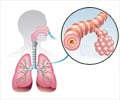The 2003 Severe Acute Respiratory Syndrome (SARS) epidemic in China has lessons to teach hospitals on how to prevent the spread of other respiratory diseases
The 2003 severe acute respiratory syndrome (SARS) epidemic in China has lessons to teach hospitals on how to prevent the spread of other respiratory diseases , according to new research appearing in the April 15 issue of Clinical Infectious Diseases, currently available online.
Hospitals were epicenters of SARS transmission in Guangzhou province and Hong Kong in 2003. In hospitals with especially severe outbreaks, the researchers looked at environmental and administrative factors that may have assisted in the transmission of the infection from one patient to another. This new study suggests that hospital beds placed too closely together, hospital staff working while having symptoms of SARS, and the use of oxygen therapy were the most significant risk factors associated with the spread of SARS in 26 hospitals in Guangzhou and Hong Kong.These findings have implications for controlling other respiratory disease threats, including pandemic influenza, according to senior author Joseph Sung, MD, PhD, of the Chinese University of Hong Kong. “The lesson we learned during the SARS epidemic,” he said, “was that the hospital can be a breeding ground for infectious disease. Nosocomial infection can amplify an infectious disease outbreak. It is very important to provide adequate space in hospital wards and implement effective infection control measures in order to avoid cross-contamination in hospitals.”
Unfortunately, the authors note, it is a common practice for hospitals to increase the number of hospital beds inside a ward to meet the increasing demand, especially during an epidemic. When the distance between beds is reduced, exhaled droplets can spread from one patient to adjacent patients, spreading infection.
Health care staff working while sick are an obvious source of infection. This study found that hospitals could reduce the risk of outbreaks by providing staff with hand-washing, showering, and changing facilities.
The use of oxygen therapy, including both the use of high flow rate oxygen masks and bi-level positive airway pressure ventilation, increased the risk of the spread of SARS. The authors hypothesize that these treatments may propel infectious air from these patients farther than without masks or ventilation. Alternatively, they may generate more infectious aerosols.
“There is a gap in the knowledge of how oxygen and ventilation therapy may promote the spread of infection. Future research should include investigating the safety of high flow rate oxygen therapy and positive pressure ventilation in medical facilities and effective ways of ventilating hospitals and clinics to avoid spreading of droplets,” said Dr. Sung.
Advertisement
Source-Bio-Bio Technology
SRM








